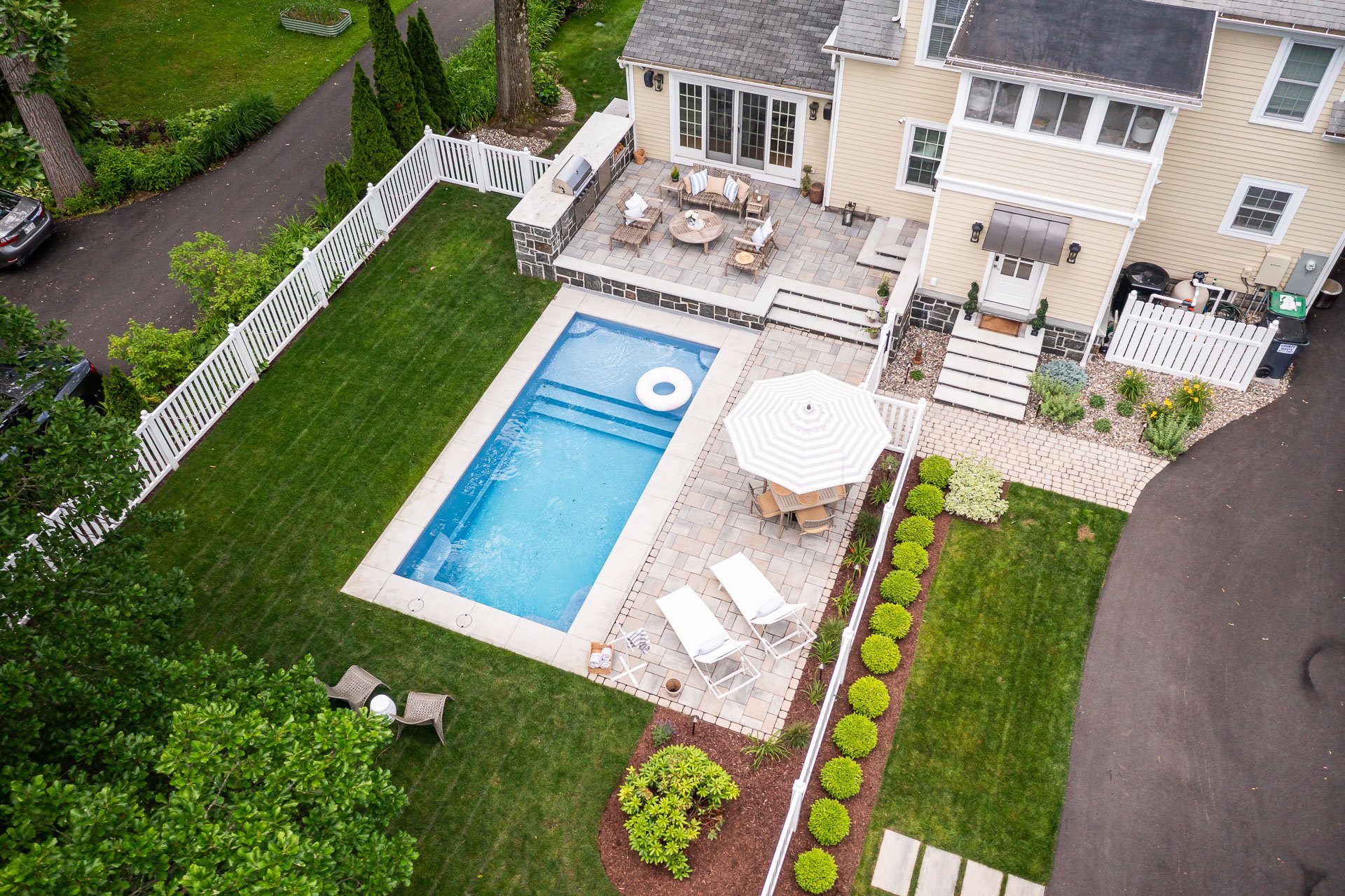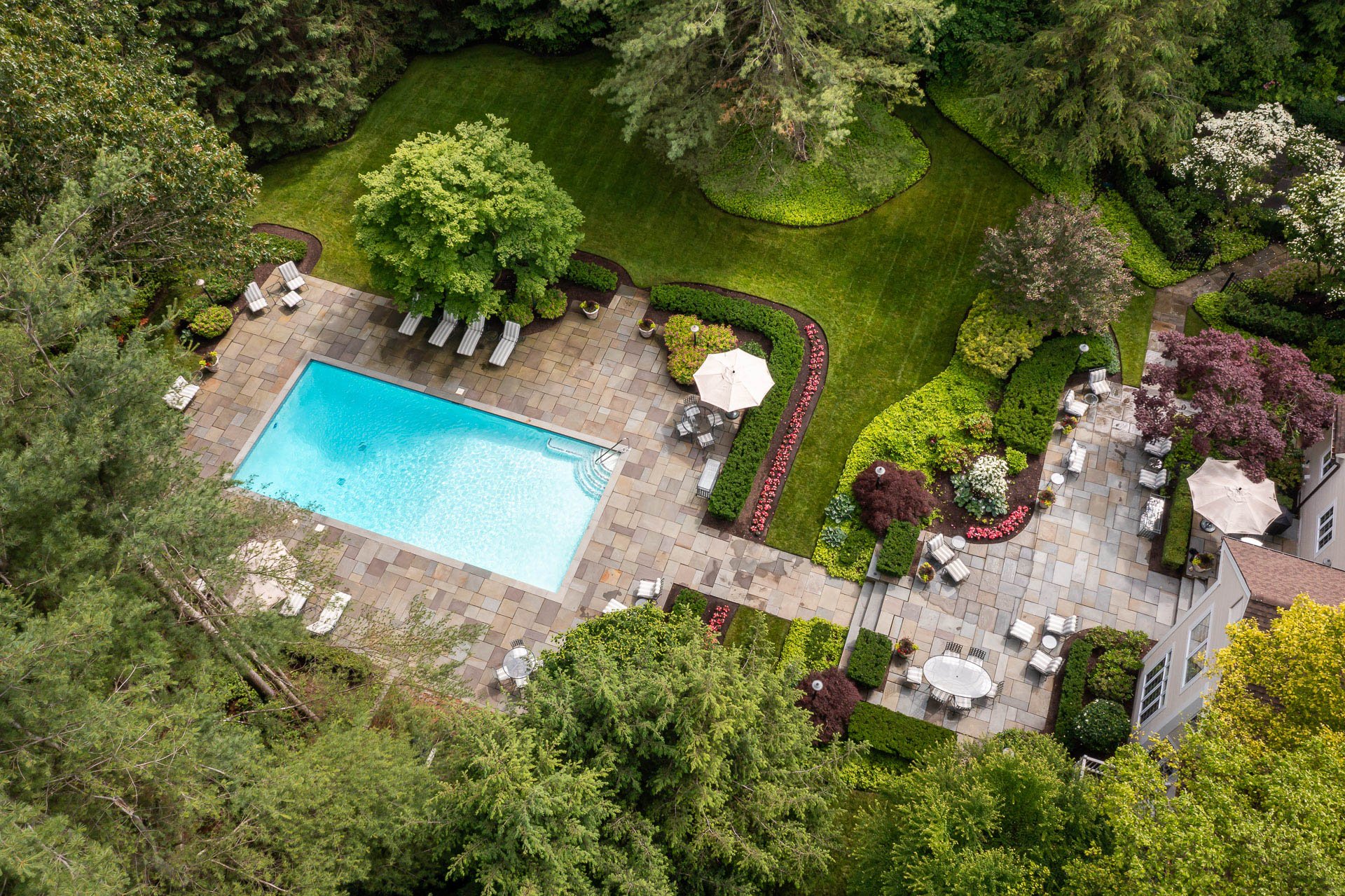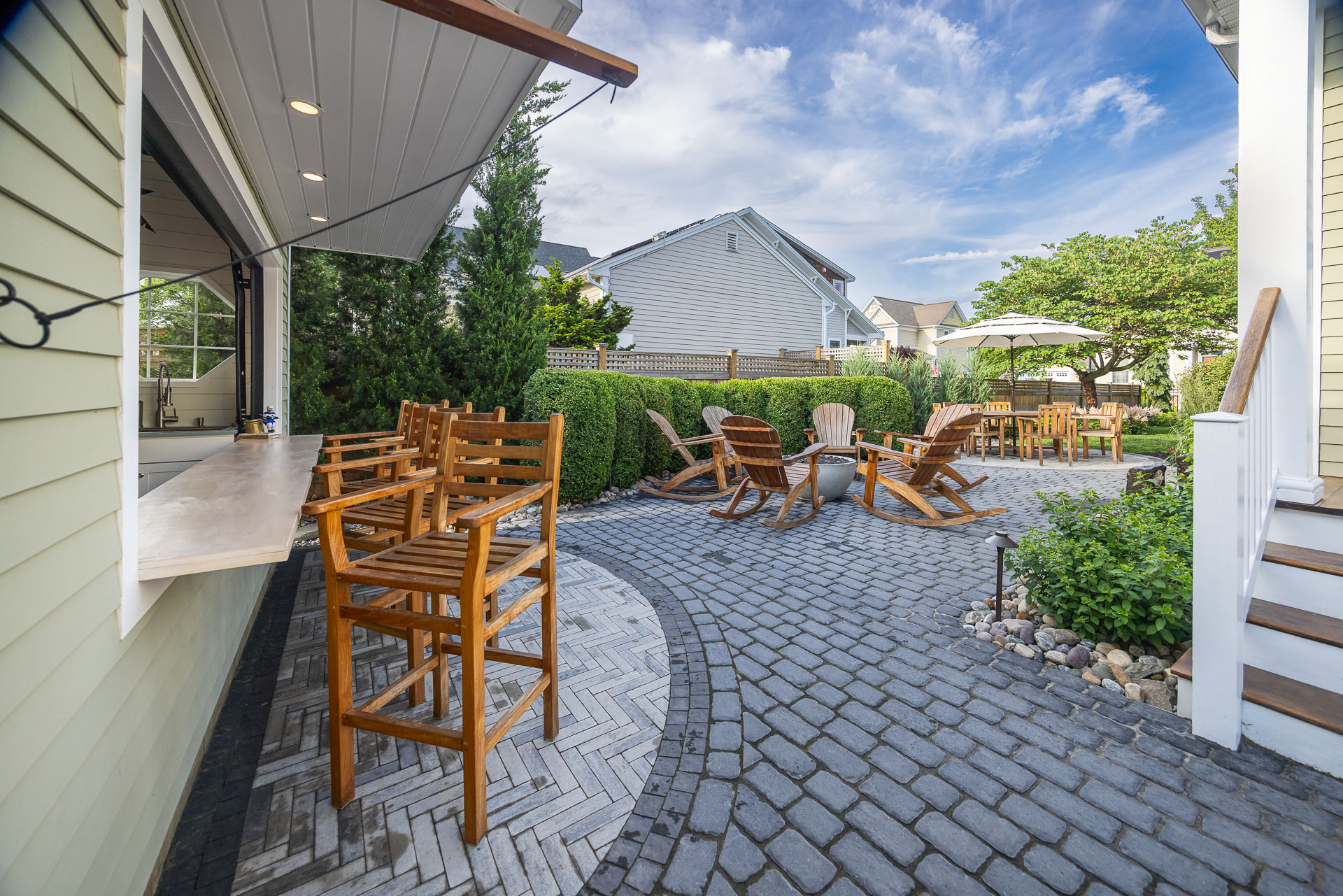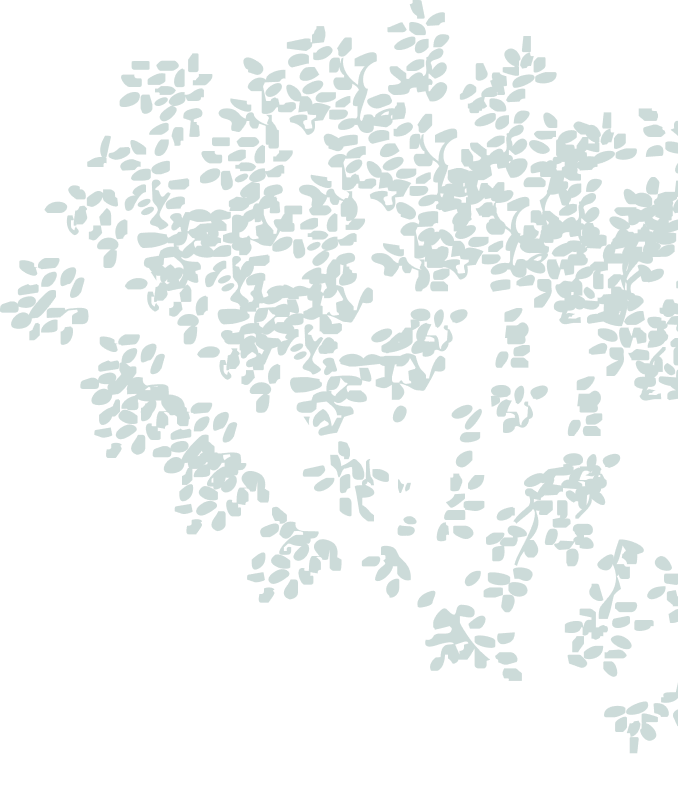
Written by: Carl Trinkle
8 min read
A well-designed patio has the power to transform not just your entire property's look, but its feel and experience, too. From cozy evenings around a fire pit to summer gatherings that spill effortlessly from house to garden, the right patio creates a sense of connection between your home, your outdoor space, and the people who enjoy it.
But choosing the right patio isn't easy. In fact, the very foundation of your choice – the best material for your patio in the Capital Region – isn’t straightforward.
One of the beautiful things about the landscaping world is that there are limitless options for materials.
The twist? In a climate known for its freeze-thaw cycles, snow loads, and seasonal extremes, homeowners like you in Saratoga Springs, Albany, Clifton Park, and the surrounding areas must deal with a unique set of considerations. And these considerations go far beyond just what looks best.
The good news? You don’t have to navigate this choice alone. With the guidance of an experienced team and a solid understanding of your choices, you can confidently select a patio material that checks every box: durability, beauty, low maintenance, and long-term value.
Let’s explore your options:
Concrete
Natural Stone
Brick & Concrete Pavers
Crushed Stone or Gravel
Cold Climate Considerations: What Matters in the Capital Region?
Before we break down material types, it’s worth considering how the Capital Region’s climate impacts patio surfaces – and why that should play a role in your choice.
Between snow, ice, and rapid freeze-thaw cycles, your patio needs to be more than just attractive – it must be durable and well-draining to prevent heaving, cracking, and surface damage. In other words, if you want to protect your investment, you have to focus on more than just aesthetics.
Moisture resistance, slip resistance, and maintenance needs become especially important in this region. When evaluating the best patio materials for cold climates, prioritize options that can:
- Handle sub-zero temperatures without cracking
- Resist salt damage (from de-icing products)
- Offer texture or non-slip finishes
- Withstand moisture infiltration
The Big Decision: Exploring Your Patio Material Options
You know that climate – and the reliability of unreliable weather – is a huge factor in your patio material decision. So, with that in mind, which material is actually best?
As you might expect, there's no one-size-fits-all answer – what's right for you totally depends on your goals, wants, and needs for your property.
For example, some homeowners prioritize low maintenance. Others want something high-end and timeless. But many (maybe just like you) are seeking the perfect balance of it all so that your patio stands the test of time and weather, and looks great doing it.
Let’s walk through a few of the most popular types of patio surfaces used in the Capital Region landscapes. We'll share how each performs in our environment and how it contributes to the bigger design picture.
Concrete: Versatile, Customizable, and Cost-Effective
Concrete remains a go-to option for many homeowners for lots of reasons. It's affordable, which is a major benefit, and is pretty flexible when it comes to design use. Whether poured in clean modern lines or stamped and dyed to resemble stone, it’s a material that can adapt to many styles.
In the Capital Region, though, concrete must be done right. That means proper grading, a solid base, well-placed expansion joints, and (critically) sealing.
Without these, the freeze-thaw cycle can lead to cracking over time – and a cracked patio doesn't just look unpolished, it can be a safety hazard for your loved ones, guests, and even you.
For those seeking a contemporary or minimalist look – especially on a larger budget-friendly footprint – concrete is a smart and durable choice when installed correctly.
Here's the real kicker for concrete: you must be prepared to reseal every few years and work with a professional who understands our climate conditions.
Natural Stone: Timeless Beauty with Built-In Durability
For homeowners who want to create an outdoor space that feels rooted, elegant, and enduring, natural stone is hard to beat. Materials like bluestone and granite are well-suited to our region – not just because they’re strong, but because they come from the Northeast itself. That means they’re naturally adapted to our conditions.
Stone also lends your patio a level of character and craftsmanship that no synthetic material can fully replicate. The unique variation in each piece adds richness and depth, making it perfect for high-end homes or landscapes where design is a priority.
Here's the biggest downside: stone does carry a higher price point, both in material cost and installation. Translation? You will pay more for a stone patio. But for those who want a truly exceptional patio that ages beautifully, it’s an investment that lasts.
Brick and Concrete Pavers: Classic Style Meets Practical Performance
Pavers – whether made from brick or concrete – can strike a great balance between visual appeal and long-term functionality for homeowners who are trying to blend their goals. Their interlocking design makes them flexible during freeze-thaw cycles, and individual units can be easily replaced if damaged, making them a great cold-climate choice.
Brick pavers tend to lend themselves to more traditional, historic styles. Think about Colonial or Craftsman homes with warm tones and a timeless structure – they usually have brick pavers featured on their patios. Concrete pavers, on the other hand, are available in a huge array of colors, textures, and finishes. They can offer more design flexibility, depending on what you're after.
In both cases (and in every scenario, to be totally honest), the key to success lies in proper installation, particularly the base layer. Without the right prep, even the best pavers will shift over time, causing damage, affecting the aesthetic, and creating safety hazards.
Crushed Stone or Gravel: Rustic and Low-Cost (But Limited)
Crushed gravel patios offer a more rustic, casual vibe and are beloved in cottage-style gardens or as secondary sitting areas. They’re affordable, drain beautifully, and require almost no professional installation.
But for Capital Region winters, they can be a bit tricky. Snow removal on this type of patio is difficult, and the loose texture can scatter easily. Gravel also doesn’t provide a stable surface for furniture, making it best for low-traffic or decorative spaces rather than main patios where you plan to host and entertain during the warmer months.
Other Must-Consider Elements for Patio Materials
When deciding between different patio materials for your outdoor space, there are more factors than durability and weather alone. Here are a few other considerations worth weighing before you choose your patio material:
Aesthetic Appeal
How well will the material integrate with your home’s architecture and landscape design? For example, a sleek modern home may benefit from large-format pavers or poured concrete, while a historic home may call for reclaimed brick or natural stone. Instead of just focusing on affordability, think about what the design of your home lends itself to for an outdoor patio area.
Maintenance
Are you okay resealing a concrete patio every few years? Or would you rather install something that needs very little upkeep, like granite or concrete pavers? Determine your level of comfort with regular maintenance to help decide which patio makes the most sense for you.
Long-Term Value
Higher-quality materials can cost more upfront, but often pay off in longer lifespan, fewer repairs, and increased curb appeal. Do you value savings on the front end that could cost you more in the long run? Or would you prefer a higher upfront cost for limited costs in the future?
Professional Design Support
Perhaps most importantly, ask yourself this question – are you trying to make this decision alone? When you work with a qualified landscape professional in the Capital Region, they can walk you through your options, evaluate your home and property, and help you make the most informed choice for your space.
A Professional Landscape Designer Makes All the Difference: Here's How
One of the most important (and often overlooked) decisions when planning a patio is who you work with. An experienced landscape designer doesn’t just help you pick a surface; they help you design a space that performs beautifully and reflects your style – all while standing the test of time.
At Gallivan, we’ve helped homeowners across Saratoga Springs, Albany, Clifton Park, and the greater Capital Region navigate these decisions with confidence. Our in-house design team understands which materials truly hold up here, and most importantly, how to integrate those materials into a full landscape plan that brings your vision to life.
From creating 3D renderings to ensure you love the look to recommending the best patio material for cold climates based on your property’s specific conditions, we’re here to make the entire process easier, smarter, and more rewarding.
Let’s Build Your Dream Patio Together
Whether you’re daydreaming of a natural stone entertaining space, a modern concrete courtyard, or a warm and welcoming paver patio, the team at Gallivan is ready to help you choose the best material for your landscape – and install it with ease and craftsmanship.
Let’s make your outdoor living space one of your favorite places to be. Contact us today to schedule your personalized patio consultation.
Image Sources: cracked concrete






